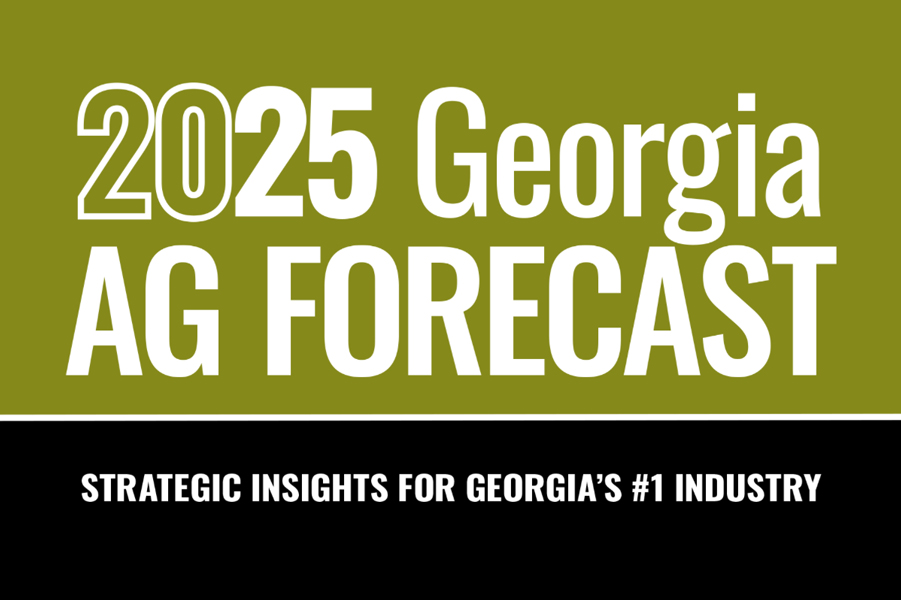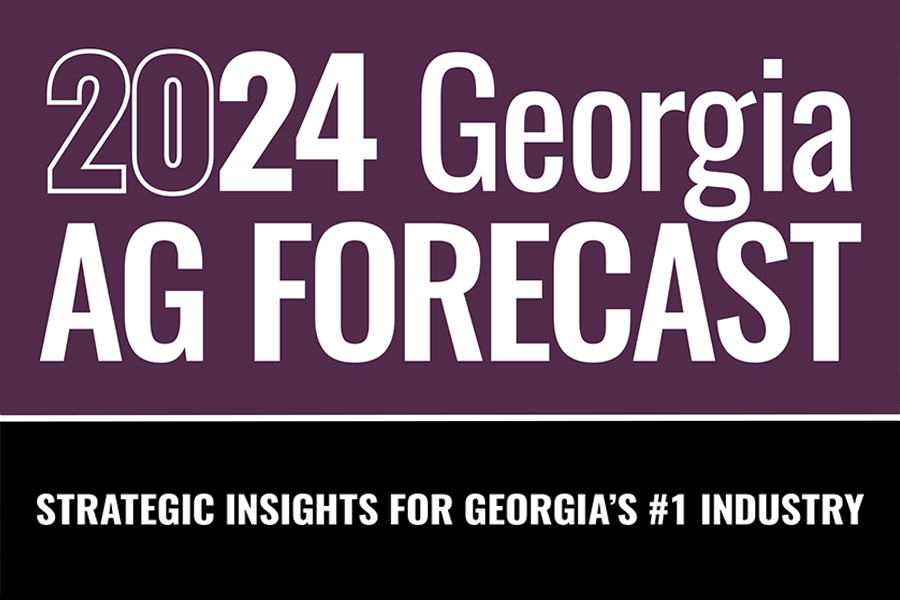Economics and Money
-

AP 133-1
Hurricane Helene Impact Report
We estimate that Hurricane Helene’s damages to Georgia agriculture and forestry will cost the state economy at least $5.5 billion in 2024 present value. This figure represents the sum of direct crop losses, losses to firms that support agriculture and forestry, losses to workers in those and related industries, and the recovery and restoration costs that firms in these industries will face. The Georgia Forestry Commission is a collaborator with UGA on this publication.
Timothy Coolong, J.Michael Moore, Jake Price, Lenny Wells, Casey W. Ritz, Wade B. Parker, Jillian Bohlen, Lawton Stewart, Greg Colson, Walter Scott Monfort, Todd Applegate, Mary Sutton, Michael Adjemian, Camp Hand, Ted McAvoy, Zilfina Rubio Ames, and Ping Yu
|
-

AP 130-3
2025 Georgia Ag Forecast
Each year, UGA’s agricultural economists develop a comprehensive overview to help various sectors of the agriculture industry navigate the year ahead. As Georgia’s land-grant university, the University of Georgia conducts cutting-edge research on critical and emerging issues that are important to the agriculture industry. From this research, UGA provides the best information and education available to producers and constituents to equip them with knowledge and decision-making tools for their businesses.
Esendugue Greg Fonsah, Amanda R Smith, Vanessa P. Shonkwiler, Ben Campbell, Yangxuan Liu, John Salazar, Daniel Remar, William Secor, Guy Hancock, Yanshi Li, and Angie Im
|
-

C 1041-1
Moving Forward
Experiencing a loss of income can be devastating. Getting by with less may seem like an impossible task. Learn how to move forward by implementing the keys to success: thinking positive, considering the possibilities, and mapping out your plan.
Christa Anderson Campbell and Travis P Mountain
|
-

C 1041-2
What About Your Assets?
Now that you are living on less, it is tempting to cash in your assets to pay the bills and make ends meet. Start thinking about the types of assets you have and the long-term implications of cashing them in.
Travis P Mountain and Dana Carney
|
-

C 1041-7
Taking Care of You and Your Family
Dealing with the financial aspects of your situation is important. But it is equally important to deal with the psychological and emotional aspects that you and your family are experiencing. Gain insight on how to take care of yourself, how to meet the needs of your family and how to deal with stress.
Christa Anderson Campbell, Andrea Scarrow, Travis P Mountain, and Dana Carney
|
-

AP 129-2
2024 Ag Snapshots
Ag Snapshots is a brief focus on Georgia’s agricultural industry and are based on the Georgia Farm Gate Value Report from the previous year with helpful infographics and maps. Years prior to 2023 can be accessed on the Agribusiness and Economic Development publications site: https://caed.uga.edu/publications/georgia-agricultural-statistics.html
Sharon P Kane
|
-

AP 130-2-01
2024 Overall U.S. and Georgia Economic Outlook
Each year, UGA’s agricultural economists develop a comprehensive overview to help various sectors of the agriculture industry navigate the year ahead. As Georgia’s land-grant university, the University of Georgia conducts cutting-edge research on critical and emerging issues that are important to the agriculture industry. From this research, UGA provides the best information and education available to producers and constituents to equip them with knowledge and decision-making tools for their businesses. Forecast by Jeffrey M. Humphreys, UGA, Director of the Selig Center for Economic Growth. The overall U.S. outlook projections include: 1. The 2024 economic forecast for Georgia calls for an economic slowdown but not a recession. We estimate the probability of recession at 33% for Georgia compared to just under 50% for the United States. 2. Georgia’s lower risk of recession reflects recent economic development success and stronger demographics. 3. The resilient labor market and the strong financial position of households are two reasons why we expect continued economic expansion. 4. Inflation will continue to ease but will not fall to levels experienced before the pandemic. 5. The main downside risks to growth are missteps by the Federal Reserve, a financial crisis, and an energy-price shock. Each of these risks alone could trigger a recession.
Ben Campbell
|
-

AP 130-2-02
2024 Georgia Agriculture Outlook
1. Food and commodity prices are expected to return to prepandemic levels.
2. Coupled with increasing costs, the nation’s farm income is expected to decline by 17% between 2022 and 2023.
3. Georgia’s 2023 net farm income is likely to return to the 10-year average of about $3 billion.
4. Potential upsides for Georgia are the possibility of higher demand for poultry, cotton, and peanuts from domestic and overseas markets.
5. Risks to this forecast are higher input costs, geopolitical risks, cheaper imports of some commodities, and a global economic slowdown.Ben Campbell and Gopinath (Gopi) Munisamy
|
-

AP 130-2-03
2024 Inputs and Production Expenditures Forecast
1. Farm input expenses continued to increase in 2023; when adjusted for inflation, they remained below 2014’s record highs.
2. Notable changes in 2023 included reductions in farm interest and fertilizer expenses.
3. Total production expenses are forecast to decline slightly with the largest changes in interest, fertilizer, and pesticide categories.Ben Campbell and Guy Hancock
|